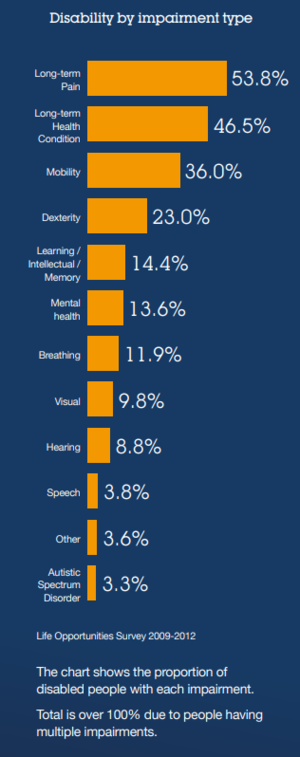Government Spotlight: Recruiting more people with disabilities
At Berwick Partners, we’re continually looking at how we can do more to help our clients recruit workforces that are more diverse.
The Odgers Berndtson Group Government Practice’s biggest client, the Civil Service, has set ambitious targets for ethnicity and disability in the Senior Civil Service (‘SCS’, the most senior c.4,900 people). We are enthusiastic about helping meet these targets not only for reasons of fairness, but also because we believe that when people from diverse backgrounds are involved in creating public services, we get better services that work for everyone. In this post, we look in particular at disability.
Across the Civil Service as a whole, 12.8% of staff have a disability, compared to 14.2% for the UK’s economically active working age population as a whole. However, only 7.3% of the SCS have a disability. To address this, the Civil Service has set targets for people with a disability to be 8.5% of new entrants to the SCS for 2019-2022, and rising to 11.3% for 2022- 2025. The achievement of these targets should result in people with a disability holding 8% of SCS roles by 2025.
When we speak to many of our clients across government, they have a good understanding of the targets and are keen to meet them. However, there is sometimes a gap between good intent and a plan for how to hit the targets. We’re not claiming to have all the answers, but we are keen to share some of our thoughts so far.

It seems that the path to a more diverse and inclusive workforce starts at home, with existing staff. For example, when Dan Brooke (now CEO of Smart Energy GB) was Board Champion for Diversity and Inclusion at Channel 4, the number of staff with a declared disability rose from 3% to 11%. Yet only 2% of this 8% increase came from new recruitment: the majority of the improvement came from creating an inclusive culture where existing staff with undisclosed disabilities felt able to disclose them for the first time. Anecdotal evidence from sources such as Glassdoor would suggest that some of our Civil Service clients have quite high levels of undisclosed disability.
So why do so many people have an undisclosed disability? When we say ‘people with a disability’ the image that first leaps to mind for many of us is of a person in a wheelchair, perhaps because of the ubiquity of the International Disability Symbol. If we give the matter further consideration we may next think of people with a visual or hearing impairment. Yet if we look at some of the government’s own data, the most prevalent disability is long-term pain (53.8% of disabled people). The table below presents more detail: many of the disabilities listed are non-visible.
Many staff with such non-visible disabilities may perform a mental calculation that the costs of disclosing their disability outweigh the benefits of disclosure. In a culture of poor inclusion and lack of trust, they may worry about being passed over for promotion or being bullied by colleagues. In the words of one staff member ‘They already ridicule me for my age, I’m not going to give them the added ammunition of knowing I have partial hearing loss’. In such a situation, a staff member might decide to take a DIY approach to making reasonable adjustments, or simply live without them.
Driving a culture of increased inclusion creates a virtuous circle, as more existing staff feel comfortable to disclose their disability which helps drive their organisation’s reputation as a disability-friendly employer, both internally and externally. This enhances the ability of executive search firms such as Berwick Partners and Odgers Berndtson to attract more applications from people with disabilities, helping us to help our clients achieve their targets.
At Berwick Partners, we’re continually looking at how we can do more to help our clients recruit workforces that are more diverse. Another way in which we are helping our clients attract more applications from people with disabilities is through our use of the jobs board run by social enterprise Evenbreak, which brings together employers who actively want to attract disabled candidates with candidates who want to work for inclusive companies. Evenbreak’s founder, Jane Hatton, says “Employers told us they struggled to attract disabled candidates while 82% of disabled candidates told us their biggest barrier to employment was identifying employers who were truly disability friendly. So, we joined the dots and created the UK’s most accessible job board to connect the two.”
Of course, it is not enough to just attract applications from people with disabilities: we need to help them be at their best throughout the selection process. We ensure our interviews and assessments are welcoming and accessible for all applicants, spending time with them prior to interview to prepare them on what to expect, enabling them to shine in a competitive process. We apply reasonable adjustments at all stages, asking candidates if they have any special requirements. We help ensure that our client’s interview process is perceived by candidates as representative, welcoming and inclusive – not a barrier to application.
This post has shared some of our thoughts on how to recruit more people with disabilities. We would welcome any thoughts or suggestions on this theme: all feedback is welcome!
For more information, please contact Emily Hudson, a consultant in our IT & Digital practice.


